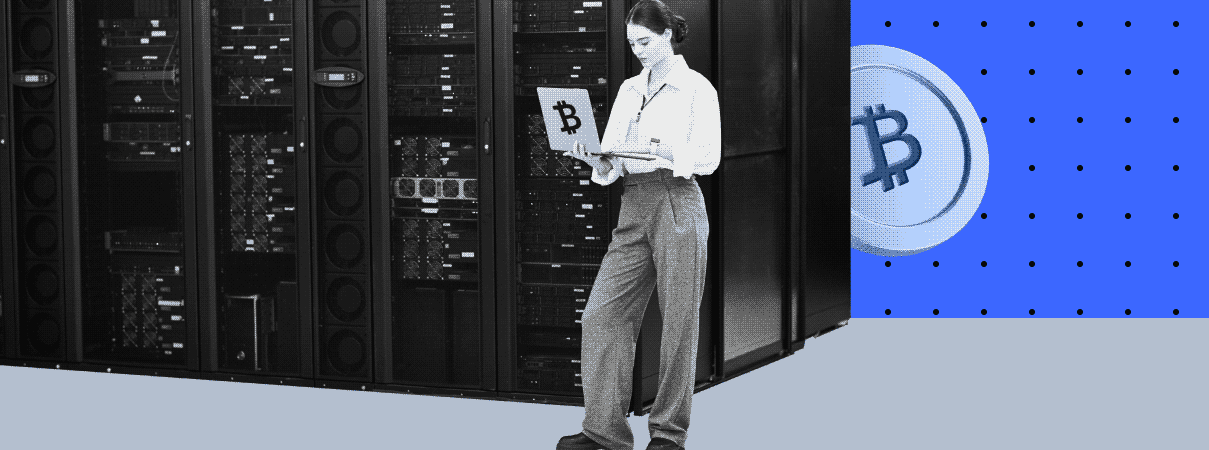What Is Decentralized Finance (DeFi)?
Decentralized Finance (DeFi) is a decentralized and publicly accessible financial ecosystem. Users are provided with financial applications or services created on a public blockchain (on Ethereum, as a rule) within the system.
DeFi is organized as a peer-to-peer system whose services enable financial services with no intermediaries. The ecosystem includes various aspects of financial services: loan approval, trading within a specific decentralized structure, investment tools, etc. Interaction with the ecosystem is available to every user, and special peer-to-peer (P2P) or decentralized applications (dApps) manage assets.
DeFi Features and Benefits

Here are some of the notable features of the DeFi ecosystem:
- Self-management. In the absence of a centralized command mechanism, any business operation is governed by the rules of smart contracts. This allows dApps to run with minimal user intervention.
- Transparency. DeFi services are designed with open-source code, so each user can monitor how a particular service works. In the same context, transactions are accompanied by pseudo-anonymity, despite their public nature.
- Transnational, cross-border functionality. Most dApps are accessible to all Internet users.
- Inclusivity. The decentralized financial system is considered to be inclusive – anyone can develop an app and use it. If we compare it to the established financial sector, DeFi has no controllers or accounts that require filling out complicated forms. Instead, user interaction is handled through smart contracts.
- Flexibility. Users can apply third-party dApp interfaces or create their own variants if they wish. To do this, smart contracts work on the principle of open APIs.
- Interoperability. Several DeFi services can be used to create new dApps. This enables the compatibility of innovations with the existing ecosystem.
Specialists and users note several advantages of the DeFi ecosystem:
- The system is characterized by an even distribution of rights of control among many participants, so there is transparency and high speed of transactions, no excessive regulation, and no long chain of intermediaries. This is extremely important in lending and other operations – the lender does not need to share income with intermediary banks, and borrowers take loans at a better rate.
- Smart contracts and voting manage DeFi services. Thus, all transactions are subjected to clear rules.
- Services based on open-source protocols are more trustworthy as they are easy to verify, modify, and integrate with other applications.
Different Uses of DeFi
Despite its novelty, the DeFi ecosystem is already populated with all sorts of services that appeal to a wide range of users.

Creation of Decentralized Exchanges (DEX)
This type of platform operates on the blockchain, and users’ funds and personal information are not stored on their servers. Instead, these exchanges are a kind of intermediary, providing interaction between buyers and sellers of cryptocurrency assets.
In addition, a DEX provides new trading and exchange tools that eliminate the need for KYC procedures, the importance of specific intermediaries, and oligopoly.
The Uniswap platform is an example of a successful and rapidly developing DEX that combines trading and lending functionality. The dY-dX trades provide summary information on the spot price and liquidity of specific financial transactions.
Easy Asset Management
This direction of DeFi is still relatively small compared to traditional financial markets, though some projects still offer attractive decentralized solutions. For instance, the Melon service, whose users manage their own or other people’s ETN ERC-20 tokens. The Melon protocol is managed collectively by all community members.
Another interesting investment project is Set Protocol, which provides the possibility of creating Sets – ERC-20 tokens for basic assets management. This model is similar to the usual financial ETFs.
Issuance of Tokenized Assets
In the DeFi sphere, tokenized assets (security tokens) are issued without intermediaries. The issuance of STOs (Security Token Offerings) is carried out in strict compliance with legislation, which guarantees increased protection of investment rights and reduces the regulator’s risks in relation to the issuer. In addition, security tokens often include assets or the right to receive part of the income of the issuers. This makes platforms provide a compelling long-term investment vehicle similar to traditional securities.
STOs allow the breaking down of fixed assets into smaller components, increasing their liquidity and investment availability. For example, instead of buying and further profiting from the apartment lease, investors can buy tokens in the form of a share of that apartment, allowing them to receive a corresponding share of the income from rents. At the same time, as underlying assets, tokens may be more liquid than real estate.
Creating Decentralized Stablecoins
Stablecoins are cryptocurrencies whose price is comparable to certain underlying assets (e.g., the U.S. dollar and others). Fiat money, cryptocurrencies, gold, and other physical assets or combinations of these are used to back stablecoins. The issuers themselves provide the value of these coins. DeFi services allow the use of stablecoins for staking and yield farming. This is a kind of deposit, providing liquidity to the service and offering the investor a 20% annual return or more. However, risk factors include a floating interest rate, high market volatility, and the stability of the service itself.
Accounting of Non-Custodial Lending Protocols
A common way to use DeFi services is to make a loan without trusted parties or intermediaries (traditionally, this role is played by a bank, financial corporation, etc.). Smart contracts are written considering non-custodial lending protocols to reduce counterparty risk and lower transaction fees. MakerDAO was the first such application. There are several other capital pooling protocols that allow users to lend or borrow cryptocurrency assets.
Each type of protocol provides different interest rates, smart contract risks, and pool liquidity.
Synthetic Assets
At the moment, there are a number of protocols implementing smart contracts for the issuance of synthetic assets. For example, the UMA team is working on a derivatives platform. The Synthetix protocol is another example, which issues synthetic assets in the form of Ethereum tokens. The benefits of such speculative assets for traders are the availability of leverage and various mechanisms insuring their positions.
Peer-to-Peer Predictions
Platforms represent the prediction segment for betting on sporting events or other high-profile processes involving different resolution options. So, the Augur service creates peer-to-peer predictions, and everyone can bet on them and buy or sell a share of the potential income.
Numerai is an interesting project, a kind of hedge fund that uses artificial intelligence to search for the most effective tool for trading digital assets. The developers process and analyze data from public sources, creating algorithms to predict transactions. Any user can make predictions about specific events using NMR tokens to bet on their execution. Reward amounts are calculated individually, depending on prediction accuracy and the size of initial bets.
Risks and Drawbacks of DeFi
Despite its many advantages, the decentralized finance ecosystem also carries certain risks and disadvantages.

The most serious risks include:
- Hacking. Although DeFi services do not require trust in people, one still has to believe in the code of algorithms and smart contracts written by other users. The collapse of The DAO project in 2016 is a clear negative example of such a technological flaw.
- Centralized data flow. Blockchain protocols use oracles—trusted sources of information—to obtain data about the external environment. But when errors occur, the correct execution of smart contracts is also at risk. Decentralized alternatives are being actively developed in the DeFi environment to solve this problem.
- The negative impact of hype. Often, hype does not help but hinder the market, which can burst when the interest is too heated. This is precisely the reason for the volatility of the cryptocurrency market as a whole.
- Insufficient amount of capital for large loans. In the DeFi ecosystem, you can only get relatively small loans.
Among the main disadvantages of DeFi are:
- “Blurred” responsibility. In the DeFi ecosystem, there is no specific body responsible for the events and operations. Decentralized governance is considered a key principle of DeFi services, which assumes that each participant is interested in the ecosystem development, so all decisions are made with everyone’s economic benefits in mind. However, this assumption can be violated. This can be either directed sabotage or a consequence of users’ unwillingness to participate in the ecosystem development.
- Sole control. On the other hand, the development of some services is controlled by a team of creators who can unilaterally make potentially damaging decisions for the community. But this rarely happens. DeFi platforms are often based on collective management with the participation of all asset owners.
- The potential for systemic inaccuracies. These risks can lead to reduced liquidity and lending hazards. Another problem is high volatility. If a rapidly falling price characterizes an underlying asset blocked by the proprietary CDP protocol, this leads to massive asset destruction and the undermining of the entire ecosystem. The protocols used to secure credits prescribe an excessive amount of assets to minimize these risks, thereby reducing their value.










